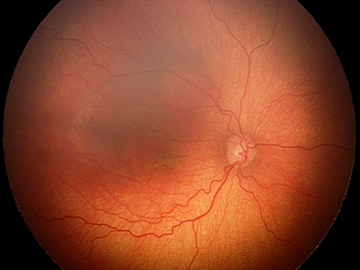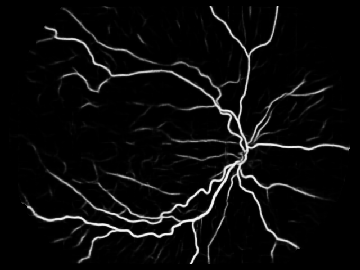

Leading invention in AI, telemedicine and data analytics for ophthalmology
The frenetic pace of technology in the 21st century is changing medical practice, and OHSU Casey Eye Institute is an epicenter for inventing and integrating these new tools into ophthalmology.
“The wealth of data and incredible advances in technology are changing the way we practice ophthalmology,” said pediatric ophthalmologist Michael F. Chiang, M.D., a nationally-known medical informatics expert who trained as an engineer before earning his medical degree. “At OHSU Casey Eye Institute, we are among a handful of centers deeply investigating telemedicine, artificial intelligence and data analytics for ophthalmic care. We are ideally positioned to go from identifying a clinical need to researching a solution, proving it works, applying it to real-world care, influencing national best-practice guidelines, and integrating it into our educational curriculum.”
Chiang was co-leader in a 2018 research study describing a novel artificial intelligence algorithm designed to diagnose retinopathy of prematurity (ROP), a leading cause of childhood blindness worldwide. The study showed that this artificial intelligence algorithm accurately diagnosed severe ROP in 91 percent of cases, which was better than a panel of leading experts, who were correct an average of 82 percent of the time.
“There’s a huge shortage of ophthalmologists who are trained and willing to diagnose ROP. This creates enormous gaps in care, even in the U.S., and sadly leads to many undiagnosed children around the world,” Chiang said. “Through deep learning, the algorithm uses the collective knowledge of ophthalmologists and creates a mathematical model that accurately diagnoses ROP from images. The implications are exciting, especially for rural and underserved areas.”
Chiang heads the Oregon State Elks Center for Ophthalmic Informatics, the only such center in the country. He is principal investigator for a consortium of 12 academic institutions sharing the goal of developing better methods for diagnosing and treating ROP through computer-based image analysis, genetic analysis, and biomedical informatics analysis.
An early investigator into telemedicine for ophthalmology, Chiang continues to position OHSU Casey Eye Institute as a leader in pushing the boundaries of telemedicine. He is involved in many studies funded by the National Institutes of Health regarding the use of electronic health record systems to improve the quality and efficiency of ophthalmic care, and he leads major American Academy of Ophthalmology initiatives involving registries, data analytics and big data.
“Having the technology is one thing but applying it to a particular disease is the challenging piece,” Chiang said. “Our work at OHSU Casey Eye Institute illustrates the principles and creates a blueprint for application.”